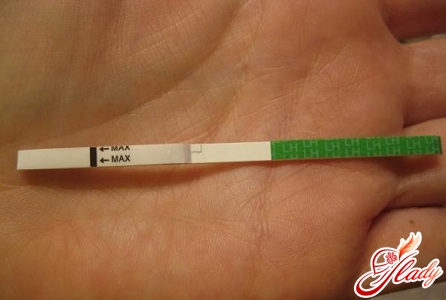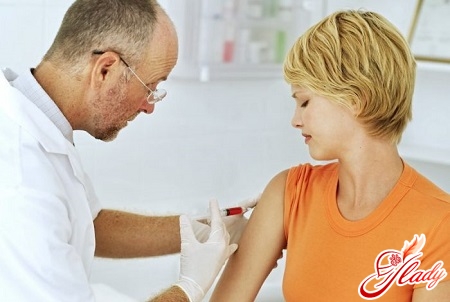
There are a lot of processes going on in lifecyclically, including in the female body. After all, a woman's ability to conceive is directly related to her menstrual cycle. The ovulatory period is the most significant. Many women face the fact that ovulation occurs ahead of schedule. What is early ovulation? And what is the reason for premature maturation of the egg?
How the egg matures
Before answering these questions, it is necessary tolearn about how ovulation occurs. This is the process by which a mature egg leaves the ovary directly into the abdominal cavity, from where it travels to the fallopian tube. After this, the egg is fertilized, and pregnancy occurs. If this does not happen, it will die in about a day. The period of egg maturation is different for each woman. For some, it occurs after menstruation, while for others, it occurs almost at the end of the cycle. However, for most women, the egg matures approximately in the middle of the cycle. For example, if a woman's menstrual cycle lasts 28 days (the average cycle length), then ovulation will occur approximately on the 14th day. The menstrual cycle is divided into 2 phases - follicular and luteal. In the first phase, the egg matures. In the second phase, the corpus luteum develops. Ovulation separates these phases. It is important to note that the luteal phase is somewhat stable and lasts for about 14 days regardless of the length of the menstrual cycle. Based on this data, you can find out the day when ovulation will occur. To do this, subtract 14 days from the length of the menstrual cycle (from the end). For example, if the cycle is 35 days, then subtract 14 from 35, the result will be 21. In our example, the woman will ovulate approximately on the 21st day of the cycle. If a woman has a short cycle (25 days), the calculations should be made using a similar method. Subtract 14 from 25, the result will be 10. This will mean that the egg enters the follicle on the 10th day of the cycle. This calculation method is called the calendar method.
Why would a woman know when she had ovulation?
If a woman uses the calendar methodcontraception or planning a pregnancy, she should know exactly when she ovulates. It is worth noting that this method of contraception is quite unreliable, since this period changes very often for any woman, sometimes from month to month. In addition, a mature egg lives for about a day, and sperm can remain viable for up to 7 days. Therefore, a woman can become pregnant if sexual intercourse occurs within 6 days before ovulation and 1 day after it. Therefore, premature ovulation can be a serious problem for those women who are trying to get pregnant. After all, most of them simply do not know about this feature of the body. When planning a pregnancy, you must learn to determine the day of ovulation. Premature ovulation is considered a natural process occurring in the female body. With early ovulation, the egg matures and leaves the follicle already on the 8-10th day after the onset of menstruation. As a rule, its onset is provoked by the following reasons: overwork, stressful situations, exacerbation of a chronic disease, various diets, bad habits (alcohol, smoking), too active a lifestyle. Factors influencing early maturation of an egg can be very different. The slightest changes in a woman's body affect her menstrual cycle. Maturation of an egg and its release from the follicle immediately after menstruation can be caused by overwork, colds, stress, climate change, diet and sleep patterns. Any bad habit (smoking, alcohol) and some medications can disrupt the menstrual cycle. Diets and sudden weight loss can cause conception to fail. Often, premature ovulation is associated with hormonal imbalance.
How to determine ovulation
Ovulation does not have any obvious symptoms.But if a woman carefully monitors her body for several months, she will be able to predict the onset of ovulation, including premature ovulation. In this way, she will be able to plan her pregnancy. How to understand that your body is ready for conception? Symptoms may be as follows:
A woman can also determine this on her ownreadiness for conception. The methods listed below will help her with this. They will be especially useful for those women who are planning a pregnancy. The first method is measuring the basal (rectal) temperature. It must be measured strictly under certain conditions. Measurements should be taken over several menstrual cycles. The results should be recorded on a temperature chart. This method allows you to accurately determine the day of ovulation. The fact is that the basal temperature depends on female sex hormones. In the first phase of the cycle, the temperature remains within 36.7-36.8 degrees. In the second phase, the basal temperature rises by 0.5-0.7 degrees. During ovulation, there is a decrease of 0.3 degrees. Ovulation can also be determined using ultrasound (folliculometry). This method allows you to see a mature follicle. Its main disadvantages are the high cost and the waste of free time. Along with the above methods, special tests based on changes in the amount of sex hormones during the period when the egg leaves the follicle help to determine premature ovulation. Such tests react to a high concentration of luteinizing hormone in the urine. Its amount increases approximately 24-36 hours before ovulation. There is another option that allows a woman to understand that premature ovulation has occurred. To do this, you need to monitor cervical discharge. Every woman should remember that early ovulation is not a disease, so she will definitely be able to get pregnant and give birth to a healthy child. The main thing is not to miss the opportunity.









